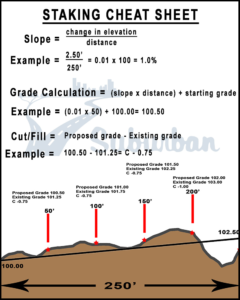- By Ron La Porte
- In Solutions
Drainage and Asphalt

Drainage is a crucial component to how a parking lot, driveway, or roadway function. Puddles are fun to play in when you’re a kid! But if you are the owner of a property that has a puddle in a driving or parking area, they can be a nuisance and liability.
How are puddles formed on pavement surfaces?
Puddles formed on a pavement surface are low spots where the water collects. In these areas the surrounding pavement is higher than the bottom of the puddle. Surface puddles can be formed during the paving process. There are a few ways this occurs. The first manner is when the stone below the paving surface isn’t smooth allowing a “dip” in the asphalt as the paver moves past it. Another way this happens is when the sub grade below the stone and asphalt is unstable causing the section below the asphalt to sink when being paved. Finally, slow draining paving surfaces can occur during the design process.
Slow draining pavement
As mentioned above, slow draining pavement surfaces can occur during the design process. Simply put, if water doesn’t have ample amount of elevation drop over a span, it will move slowly and sometimes not at all. Before a parking lot, driveway, or roadway are replaced it is important to check the existing slope of the pavement surface to determine if a new design is required.
Grades, elevations, and slopes
Making the grade isn’t just a cute saying when it comes to the design of a paving area. The stone and subgrade below asphalt are required to be shaped in a way that promotes positive drainage. This is done by recording existing elevations and determining the slope between two areas.
Taking this back to freshmen algebra; slope is determined by the following equation.
Point A – Point B= Elevation Difference x 100 = Slope
Distance
Recommended slope for an asphalt paving surface is 1.5%. In simple terms, that is 1.5’ of fall for every 100 ft. Asphalt is a flexible pavement that is susceptible to the freeze/thaw cycle more so than concrete, so the parameters for asphalt are greater. For example, concrete can function at less than 0.5%, but this certainly isn’t ideal for either application.
Correcting drainage
The method used for correcting drainage is mostly simple. The basis is finding an area where the water should flow to, usually a catch basin or drainage ditch, and then determining where the water should be flowing from. Drainage can then be corrected by either lowering the area the water flows to and/or raising the area the water is flowing from.
Construction Staking
Once a slope is determined between two points, the span between these points should be set to reflect that slope. The sub grade and stone should be smooth within this span. Smoothing out an area may require material to be added or taken out. The most common method to display the cuts or fills at each point is displaying them on wooden stakes and/or lath. Stakes are pounded into the  ground with a hammer and can be placed at increments or stations along a length between two points. A permanent marker is then used to mark the stakes or lath. The markings used are a matter of preference based on the type of work that is being performed.
ground with a hammer and can be placed at increments or stations along a length between two points. A permanent marker is then used to mark the stakes or lath. The markings used are a matter of preference based on the type of work that is being performed.
Tools for the job
Construction staking has come a long way since its inception that can date way back to the Egyptians who used plum bobs and other means to establish line and grade. Fast forward a few thousand years and now the tools that are available are highly technical and accurate. The most common tool that determines elevation is a laser level used with a Lenker rod. For more professional means, a robotic total station and GPS units can be used. In addition, a spirit level should be used as a double check of the final grade.
Engineering measurements and benchmarks
The easiest way to display grade elevations are in engineering notation rather than standard or even metric measurements. This breaks down measurements to whole numbers which are easier to use in calculations. In order to ensure measurements are relative to each other, a benchmark should be established.  A benchmark is simply a spot, preferably permanent such as a building floor elevation, for which all other grade elevations are tied to. To simplify things, the benchmark is often set at the lowest spot where the water flows to, usually a catch basin. When 100.00 is set at this location it makes the math easier to determine slope from areas beyond.
A benchmark is simply a spot, preferably permanent such as a building floor elevation, for which all other grade elevations are tied to. To simplify things, the benchmark is often set at the lowest spot where the water flows to, usually a catch basin. When 100.00 is set at this location it makes the math easier to determine slope from areas beyond.
Summary
Puddles and slow draining pavement are a nuisance and can be a liability due to these areas freezing in colder temperatures and aiding in the premature failure of the pavement. These areas can be addressed during the paving and design process. To ensure positive drainage, grade elevations should be checked, and slopes determined. Construction staking can then help establish a smooth grade.
Do you have an area in your parking lot or driveway that holds water? We can help! Check out examples of projects we’ve redesigned and let us know if we can do the same for you.
